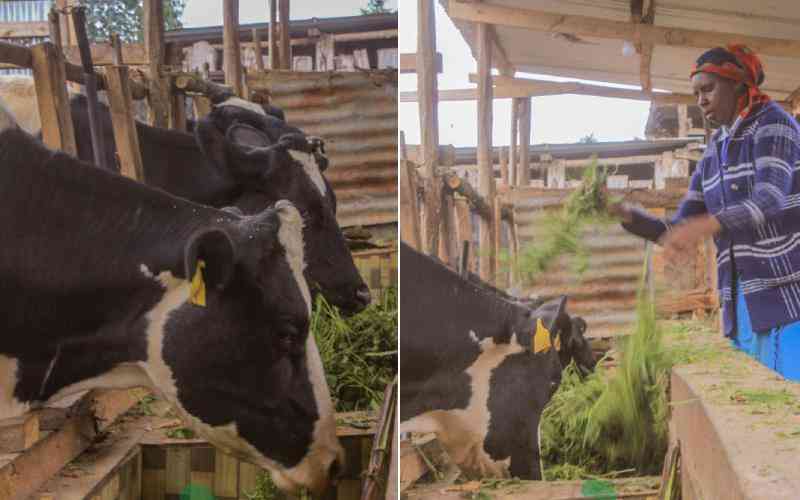During the recently held Agriculture Summit at State House, Agriculture Cabinet Secretary Willy Bett stated that Kenya was food secure and what remained was maintaining the sufficiency.
Many have related food security to sufficiency of the maize crop. But come to think of it, are we really food secure? And are we giving much credit to the maize crop when we talk about food security? Where are other crops like rice in this debate?
Food and Agriculture Organisation (FAO) defines food security as a situation that exists when all people at all times have physical, social and economic access to sufficient, safe and nutritious food that meets their dietary needs and food preferences for an active and healthy life. Going by this, I am not convinced that Kenya is yet food secure. Looking at some initiatives the Government is taking towards enhancing food security like subsidising fertiliser, promoting mechanised farming and livestock insurance, rice has been left out from the food security picture, yet the country is earning much from it.
As established in the Ministry of Agriculture; National Development Strategy (2008-2018), rice is currently the third most important cereal crop after maize and wheat, with about 80 per cent grown in irrigation schemes and 20 per cent under rain-fed conditions. Globally, rice is one of the most important food crops in the fight against hunger.
According to Bancy Mati, a professor of Land and Water Management at Jomo Kenyatta University of Agriculture and Technology, rice consumption has been growing much more rapidly than production throughout the nearly 50 years since independence. Increasing use and decreasing production has led to an increased imports/consumption ratio.
Production of rice in Mwea - a town well known for its quality rice - is estimated at 80 per cent annually equivalent to 110, 000 tons. The country's rice consumption stands at 400, 000 tonnes, prompting the need to produce more rice to meet this demand. The Government, through the support of the Japanese Government, is constructing Thiba dam in Mwea, Kirinyaga County, where much of rice is produced in Kenya. This will establish a reservoir to hold 15.6 million cubic metres of water for expansion of irrigation project and these will see farmers harvest twice per year unlike the current situation.
Remarkably, the Government has also introduced and supported advanced rice farming technologies like System Rice Intensification (SRI) and Water-Saving Rice Culture (WSRC) in Mwea Irrigation Scheme.
SRI is a technology using a combination of practices that improve the productivity of rice grown in paddies. It maximises on an efficient and effective utilisation of soil, water and nutrients.
Milled SRI Rice has better grain, has a stronger aroma and as a result sells fast in the market. The technology utilizes less seed, saves 30 per cent water and works with nearly all rice varieties. It was introduced in Mwea in 2009.
The latest technology under trial by farmers at Mwea Irrigation and Agricultural Development Centre (MIAD) is the Water-Saving Rice Culture.
Though it is almost similar to the SRI technology, it advocates using of young seedlings of 20 days and transplanting 2-3 seedling per hill.
It is said that a journey of a thousand miles begins with a single step.
Although we are not there, Kenya is on the right track towards food security. The Government, however, needs to walk the talk in implementing agricultural policies and Vision 2030, among others.
More attention needs to be given to nurturing our children/youth to become agriculture-oriented from a tender age by re-introducing and emphasising on agricultural lessons in our institutions from primary to tertiary levels.
 The Standard Group Plc is a
multi-media organization with investments in media platforms spanning newspaper
print operations, television, radio broadcasting, digital and online services. The
Standard Group is recognized as a leading multi-media house in Kenya with a key
influence in matters of national and international interest.
The Standard Group Plc is a
multi-media organization with investments in media platforms spanning newspaper
print operations, television, radio broadcasting, digital and online services. The
Standard Group is recognized as a leading multi-media house in Kenya with a key
influence in matters of national and international interest.
 The Standard Group Plc is a
multi-media organization with investments in media platforms spanning newspaper
print operations, television, radio broadcasting, digital and online services. The
Standard Group is recognized as a leading multi-media house in Kenya with a key
influence in matters of national and international interest.
The Standard Group Plc is a
multi-media organization with investments in media platforms spanning newspaper
print operations, television, radio broadcasting, digital and online services. The
Standard Group is recognized as a leading multi-media house in Kenya with a key
influence in matters of national and international interest.








